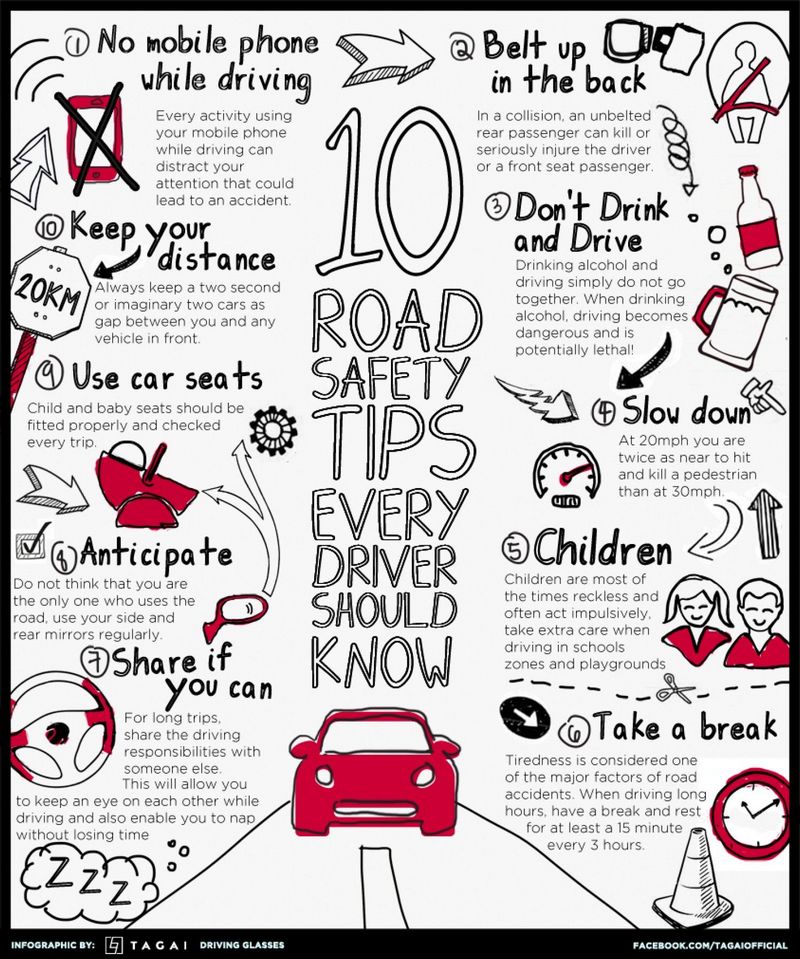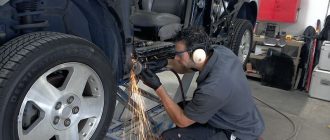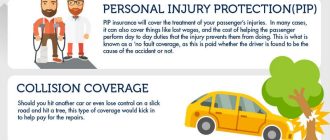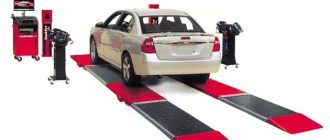
Seasonal Driving Tips to Keep You Safe on the Road Year-Round
Driving is a necessary part of life for many people, regardless of the season. However, the conditions on the road can vary greatly depending on the time of year, and it’s important to adjust your driving habits accordingly to ensure your safety and the safety of others. In this article, we will provide you with some useful tips to help you stay safe on the road year-round.
First and foremost, it’s essential to be aware of the specific challenges that each season presents for drivers. During the winter months, icy and snowy roads can make driving particularly treacherous. It’s crucial to slow down, maintain a safe following distance, and avoid any sudden movements or abrupt braking. Additionally, make sure your vehicle is equipped with snow tires or chains and carry an emergency kit with extra warm clothing, blankets, and a shovel in case you get stuck.
In the spring and fall, be mindful of wet or slippery road conditions caused by rain or fallen leaves. Slow down and allow for extra stopping distance, as your tires may have less traction on these surfaces. Moreover, keep an eye out for pedestrians and cyclists, as they may be more prevalent during these seasons.
Finally, in the summer, be cautious of the increased traffic and the presence of more motorcycles and bicycles on the road. Take extra care when changing lanes and always check your blind spots. Also, be mindful of the heat, especially if you have children or pets in the car. Never leave them unattended and ensure that the vehicle is properly ventilated.
By following these seasonal driving tips and adjusting your driving habits accordingly, you can help ensure your safety and the safety of others on the road. Remember to always stay focused, avoid distractions, and obey traffic laws. Safe travels!
Importance of Seasonal Driving Safety
Driving can be a dangerous activity, especially during different seasons of the year. It’s important to stay prepared and be aware of the potential hazards that each season may bring on the road. By following seasonal driving tips, you can ensure a safe and enjoyable journey.
Seasonal driving safety is crucial because weather conditions and road conditions change throughout the year. Driving in winter, for example, can be treacherous due to icy roads and reduced visibility. On the other hand, driving in summer can be challenging with increased traffic and the possibility of tire blowouts. By understanding the risks associated with each season, you can take appropriate measures to mitigate them and keep yourself and others safe.
One of the key aspects of seasonal driving safety is being prepared. This includes making sure your vehicle is in good working condition. Check your tires’ tread and air pressure, have the brakes inspected, and ensure all lights are functioning properly. It’s also important to pack an emergency kit that includes items like jumper cables, a flashlight, blankets, and a first aid kit. Being prepared can help you handle unexpected situations on the road effectively.
Another important aspect of seasonal driving safety is adjusting your driving habits according to the conditions. For example, during the winter months, it’s essential to drive at a slower speed and maintain a greater distance between vehicles. Additionally, you should be cautious on icy or snowy roads and avoid sudden braking or acceleration. In other seasons, you should be mindful of distractions and remain focused on the road at all times.
Staying informed about weather conditions is also crucial for seasonal driving safety. Keep an eye on the forecast before heading out and be aware of any warnings or advisories in your area. If severe weather conditions are predicted, consider postponing your trip or finding an alternative route. It’s better to be safe than sorry.
In conclusion, seasonal driving safety is of utmost importance to ensure a safe and pleasant journey on the road. By being prepared, adjusting your driving habits, and staying informed about weather conditions, you can reduce the risks associated with driving in different seasons. Remember to always prioritize safety and make responsible choices behind the wheel.
Winter Driving Tips: Navigate Snow and Ice
Driving during the winter season can be challenging and dangerous due to snow and ice on the road. However, with the right knowledge and precautions, you can stay safe and navigate through these conditions.
- Check weather conditions: Before heading out on the road, check the weather forecast for snow or ice warnings. This will help you prepare and make informed decisions about your travel plans.
- Clear snow from your vehicle: Before driving, ensure that all snow and ice are removed from your car. Clear the windows, mirrors, lights, and roof to maximize visibility and prevent debris from falling onto other cars.
- Slow down: Reduce your speed to match the road conditions. Snow and ice make it more difficult to stop and maneuver, so drive at a slower pace to maintain control of your vehicle.
- Keep a safe distance: Increase your following distance significantly to allow for a longer stopping distance. It will give you more time to react and brake if the road ahead becomes slippery or an obstacle appears.
- Use winter tires: Winter tires are designed to provide better traction on snow and ice. Consider switching to winter tires during the cold months to improve your vehicle’s grip and handling.
- Use your brakes carefully: Apply gentle pressure on the brakes to avoid skidding. If your vehicle starts to skid, release the brakes and steer into the direction you want to go.
- Avoid sudden maneuvers: Abrupt turns, accelerations, and lane changes can cause your vehicle to lose traction. Make slow and smooth movements to minimize the risk of skidding.
- Be cautious on bridges and overpasses: These structures freeze faster than the rest of the road, so approach them with extra caution. Reduce your speed and maintain a firm grip on the steering wheel.
By following these winter driving tips, you can navigate snow and ice with confidence and reach your destination safely. Remember, winter driving requires extra caution, so stay alert and adapt your driving to the road conditions.
Spring Driving Tips: Watch out for Rain and Flooding
To stay safe on the road year-round, it’s important to adjust your driving habits based on the seasonal conditions. In the spring, one of the main challenges drivers face is rain and flooding. Here are some tips to help you navigate the roads safely during this time:
- Check your tires: Make sure your tires have sufficient tread depth and are properly inflated. This will help improve traction on wet roads and reduce the risk of hydroplaning.
- Slow down: Reduce your speed when driving in rainy conditions. Wet roads can be slippery, and it takes longer to stop on a wet surface compared to a dry one. Keep a safe following distance from the vehicle in front of you.
- Turn on your lights: Visibility can be reduced during rain showers, so it’s important to turn on your headlights to help other drivers see you on the road.
- Avoid cruise control: Cruise control can increase the risk of losing control of your vehicle on wet roads. It’s best to maintain full control of the pedals to respond quickly to changing driving conditions.
- Watch for standing water: Be cautious of standing water on the road, as it can be deeper than it appears. If you encounter a flooded road, find an alternate route or wait for the water to recede before proceeding.
- Use your windshield wipers and defroster: Ensure your windshield wipers are in good condition and use them to clear rainwater from the windshield. Additionally, use your defroster to prevent fogging on the inside of your windows.
By following these spring driving tips and staying alert to changing weather conditions, you can stay safe on the road during this seasonal transition.
Summer Driving Tips: Beat the Heat and Stay Hydrated
When it comes to year-round driving, it’s important to stay safe on the road no matter the season. In the summer, the heat can pose additional challenges and risks for drivers. To make sure you beat the heat and stay hydrated, here are some essential tips:
- Stay hydrated: Drinking enough water is crucial to avoid dehydration, especially during the hot summer months. Keep a bottle of water in your car and drink regularly, even if you don’t feel thirsty.
- Use sun protection: The sun’s rays can be intense during the summer, so it’s important to protect your skin and eyes. Wear sunscreen with a high SPF and wear sunglasses to reduce glare.
- Avoid peak hours: If possible, try to avoid driving during the hottest hours of the day. The heat can make you tired and more prone to fatigue, which can affect your driving ability.
- Check your tire pressure: Extreme heat can cause your tire pressure to increase, which can lead to blowouts. Regularly check your tire pressure during the summer months and adjust as needed.
- Keep your vehicle cool: Before getting into your car, open the windows or use the air conditioning to cool down the interior. This will make your drive more comfortable and help prevent heat stroke.
- Watch out for overheating: Summer heat can cause your car’s engine to overheat. Keep an eye on the temperature gauge and pull over immediately if you notice any signs of overheating.
- Plan for rest stops: If you’re embarking on a long summer drive, make sure to plan for regular rest stops. This will give you a chance to stretch your legs, use the restroom, and rehydrate.
- Drive defensively: With the summer months come more people on the road, including tourists and vacationers. Stay alert, follow the speed limits, and drive defensively to avoid accidents.
By following these summer driving tips, you can beat the heat, stay hydrated, and stay safe on the road year-round.
Fall Driving Tips: Be Mindful of Wet Leaves and Fog
- Slow down and increase your following distance when driving on wet leaves. They can make the road slippery and reduce your vehicle’s traction.
- Use caution when driving through areas with fallen leaves. Wet leaves can cover road markings and hide potholes and other hazards.
- Keep your windshield and windows clean to improve visibility, especially during foggy conditions. Use your defroster or air conditioning to prevent fogging inside the vehicle.
- Turn on your headlights to increase your visibility to other drivers, especially during foggy weather.
- Use low-beam headlights when driving in fog to minimize glare and improve visibility. Do not use high beams as they can reflect back and reduce your ability to see.
- Avoid sudden braking or turning, as wet leaves can cause your vehicle to skid.
- Reduce your speed when approaching a curve or intersection, as wet leaves can make it difficult to maintain control of your vehicle.
- Be cautious of other drivers who may not be aware of the dangers of wet leaves and fog. Stay alert and ready to react to any unexpected situations on the road.
- Check your tire tread and ensure they are properly inflated. Good traction is essential for safe driving on wet leaves.
- Plan your route and allow extra time for your journey in case of traffic or weather-related delays. Stay updated on weather conditions before heading out.
All-Season Tires: The Key to Year-Round Safety
When it comes to staying safe on the road year-round, having the right tires is crucial. All-season tires are designed to provide optimal performance in various weather conditions, making them the perfect choice for drivers who want to stay safe no matter the season.
These specially designed tires offer a number of benefits that contribute to their year-round safety. Firstly, all-season tires are made from a unique rubber compound that allows them to maintain their flexibility in both hot and cold temperatures. This means that they can provide excellent traction on both dry and wet roads, reducing the risk of skidding or hydroplaning.
Additionally, all-season tires have a tread pattern that is specifically designed to provide a good balance between traction and handling. The tread pattern features deep grooves and large sipes, which allow the tires to quickly evacuate water, slush, and snow, ensuring better grip and control on wet and slippery surfaces. This can greatly improve the vehicle’s braking and handling abilities, making it safer to drive in any weather conditions.
Another important feature of all-season tires is their durability. These tires are built to withstand the wear and tear of year-round driving, making them a cost-effective choice for many drivers. With their long-lasting tread life, drivers can feel confident that their tires will provide the necessary traction and safety throughout the year.
To ensure the best performance and safety, it is important to regularly inspect and maintain all-season tires. This includes checking the tire pressure, rotating the tires, and keeping them properly aligned. These simple maintenance tasks can help prolong the life of the tires and ensure that they continue to provide optimal performance on the road.
In conclusion, all-season tires are the key to year-round safety on the road. With their unique design and features, these tires provide excellent traction, handling, and durability in various weather conditions. By choosing all-season tires and properly maintaining them, drivers can stay safe and confident behind the wheel no matter what time of year it is.
Safe Driving Habits: Avoid Distractions and Speeding
When it comes to safe driving on the road year-round, it is important to practice good driving habits that help to minimize distractions and avoid speeding. By following these tips, you can ensure your safety and the safety of others on the road:
- Avoid using your phone while driving: Using your phone while driving is one of the most dangerous distractions. Keep your phone out of reach or use hands-free devices in order to stay focused on the road.
- Keep both hands on the wheel: It is important to have full control of your vehicle at all times. Keep both hands on the steering wheel, especially in situations that require quick reactions.
- Avoid multitasking: Eating, grooming, or engaging in any other activity that takes your attention away from the road can be dangerous. Stay focused solely on driving.
- Observe the speed limit: Speeding is a major contributor to accidents. Always obey the posted speed limit and adjust your speed according to road conditions.
- Allow extra time: Plan your trips in advance and give yourself ample time to reach your destination. This way, you won’t feel the need to speed or rush, reducing the risk of accidents.
- Keep a safe distance: Maintain a safe following distance between you and the vehicle ahead. This will give you enough time to react to any sudden changes in traffic.

By consistently practicing these safe driving habits, you can help prevent accidents and ensure a safe driving experience year-round.
Defensive Driving Techniques: Stay Alert and Anticipate
When it comes to driving year-round, it is important to stay safe on the road by adopting defensive driving techniques. By staying alert and anticipating potential risks, you can greatly reduce the chances of accidents or collisions. Here are a few tips to help you drive defensively:
- Stay focused: Always keep your attention on the road and avoid distractions, such as using your phone or eating while driving. Make sure to also stay alert and avoid drowsy driving.
- Follow the speed limit: Adhering to the speed limit is crucial for your safety and the safety of others on the road. Adjust your speed based on road conditions and always be mindful of speed limits in different areas.
- Maintain a safe distance: Keep a safe distance from the vehicle in front of you to allow for enough reaction time in case of sudden stops or other emergencies. Follow the 3-second rule: maintain a 3-second gap between your car and the car ahead.
- Use turn signals: Signaling your intentions to other drivers is crucial for maintaining road safety. Always use your turn signals in advance before changing lanes or making turns.
- Check blind spots: Before changing lanes, make sure to check your blind spots to ensure there are no other vehicles or motorcycles in the area.
- Anticipate hazards: Stay vigilant and be on the lookout for potential hazards on the road, such as pedestrians, cyclists, or parked cars. Anticipating these hazards can help you react quickly and avoid accidents.
- Observe road conditions: Pay attention to the road conditions, especially during seasonal changes. Be prepared for rain, snow, or ice, and adjust your driving accordingly. Slow down and increase your following distance when driving in adverse conditions.
- Observe traffic laws: Always adhere to traffic laws and regulations. Follow stop signs and traffic signals, yield the right-of-way when necessary, and never drive under the influence of alcohol or drugs.
- Stay calm: Road rage can lead to accidents and dangerous situations. Stay calm and patient in traffic, and avoid confrontations with aggressive drivers.
By adopting these defensive driving techniques, you can ensure your safety and that of others on the road year-round. Remember to be alert, anticipate potential risks, and make safe driving a priority.
Vehicle Maintenance: Check Your Lights, Tires, and Brakes
When it comes to staying safe on the road year-round, regular vehicle maintenance is essential. Taking the time to check your lights, tires, and brakes can help prevent accidents and ensure that your vehicle is in good working condition.
Lights:
- Regularly check all your lights, including headlights, taillights, brake lights, and turn signals. Make sure they are clean and working properly.
- Replace any bulbs that are burnt out or dim.
- Keep extra bulbs in your vehicle in case of emergencies.
Tires:
- Check your tire pressure regularly and ensure that it is at the recommended level. Underinflated or overinflated tires can affect your vehicle’s handling and increase the risk of a blowout.
- Inspect the tread on your tires and make sure it is not worn down. Good tread depth is essential for safe driving, especially in wet or snowy conditions.
- Consider switching to winter tires for improved traction during the colder months.
Brakes:
- Have your brakes inspected regularly by a qualified mechanic.
- Check your brake fluid level and top it up if necessary.
- Listen for any unusual noises when you apply the brakes, as this may indicate a problem.
In addition to checking your lights, tires, and brakes, it’s also important to regularly maintain other areas of your vehicle, such as the engine, battery, and fluids. Following these vehicle maintenance tips will help keep you safe on the road all year-round.
Emergency Preparedness: Be Ready for Any Situation
When it comes to seasonal driving, it’s important to always be prepared for any situation that may arise. From harsh weather conditions to unexpected breakdowns, being ready for emergencies can help keep you safe on the road year-round.
Here are some tips to help you be prepared for emergencies:
- Create an emergency kit: Pack a kit with essential items such as a flashlight, spare batteries, a first aid kit, water, non-perishable food, a blanket, and a portable charger for your phone. Keep this kit in your car at all times.
- Check your vehicle: Regularly inspect your vehicle to ensure it is in good working condition. Check the tires, lights, brakes, and fluid levels. Pay attention to any unusual sounds or warning lights and address them promptly.
- Keep your gas tank full: Maintaining a full gas tank can help prevent you from getting stranded during an emergency or in severe weather conditions.
- Know your route: Familiarize yourself with the routes you take frequently. Be aware of alternate routes in case of road closures or congestion.
- Stay informed: Stay updated on weather forecasts and traffic conditions before heading out. This will help you plan your trip accordingly and avoid any potentially dangerous situations.
- Have a communication plan: Ensure you have a way to communicate with emergency services and your loved ones in case of an emergency. Keep a charged cell phone and a list of important phone numbers.
Being prepared for emergencies is a crucial part of staying safe on the road year-round. By following these tips and taking the necessary precautions, you can navigate any situation with confidence and ensure the safety of yourself and those around you.
Road Trip Safety: Tips for Long-Distance Travel
When embarking on a long-distance road trip, it’s important to prioritize safety. Here are some tips to ensure a safe and enjoyable journey:
- Plan your route: Before hitting the road, map out your route and plan for rest stops along the way. Knowing your route in advance will help you avoid getting lost and reduce stress during the trip.
- Check your vehicle: Before starting your journey, make sure your vehicle is in good condition. Check the tire pressure, engine oil, and other fluids to ensure optimal performance.
- Bring essentials: Pack a roadside emergency kit that includes a spare tire, tools, flashlight, and first aid supplies. Additionally, don’t forget to bring water, snacks, and a fully charged cellphone for emergencies.
- Take breaks: During long drives, it’s important to take regular breaks to rest and stretch. Fatigue can impair your driving ability, so pull over at a safe location and take a break every couple of hours.
- Observe traffic laws: Always follow traffic laws and drive at a safe and legal speed. Pay attention to road signs and be aware of other drivers on the road.
- Avoid distractions: Keep your focus on the road and avoid distractions such as texting, eating, or using electronic devices while driving. These distractions can significantly increase the risk of accidents.
- Be prepared for weather conditions: Check the weather forecast for your route and be prepared for different weather conditions. Pack appropriate clothing and equipment for rain, snow, or extreme heat.
- Share your itinerary: Inform a friend or family member about your travel plans, including your route and estimated arrival time. This way, someone will know your whereabouts in case of an emergency.
- Stay alert: Long-distance drives can be tiring, so it’s important to stay alert. Avoid driving when you are too tired and, if possible, take turns with another licensed driver.
By following these road trip safety tips, you can help ensure a safe and enjoyable journey on the road. Remember to always prioritize your safety and the safety of those around you.
Additional Resources: Stay Informed and Educated
- Check out the year-round driving tips provided by your local DMV (Department of Motor Vehicles). They often have resources available on their website or in-person offices that can help you stay safe on the road.
- Stay up-to-date with the latest road safety information and news from reputable sources such as the National Highway Traffic Safety Administration (NHTSA) or the American Automobile Association (AAA).
- Join online forums or communities dedicated to discussing driving and road safety. These platforms can provide valuable insights, personal experiences, and advice from fellow drivers.
- Read books and articles on defensive driving techniques, road safety, and the effects of weather conditions on driving. Educating yourself about these topics can enhance your driving skills and make you more aware of potential risks.
- Consider enrolling in a defensive driving course offered by your local DMV or other authorized organizations. These courses are designed to improve your driving skills, teach you how to handle various road conditions, and educate you on defensive driving techniques.
- Take advantage of technology to stay informed about road conditions, traffic updates, and weather forecasts. There are numerous smartphone apps and GPS devices that provide real-time information to help you plan your routes and make informed driving decisions.





